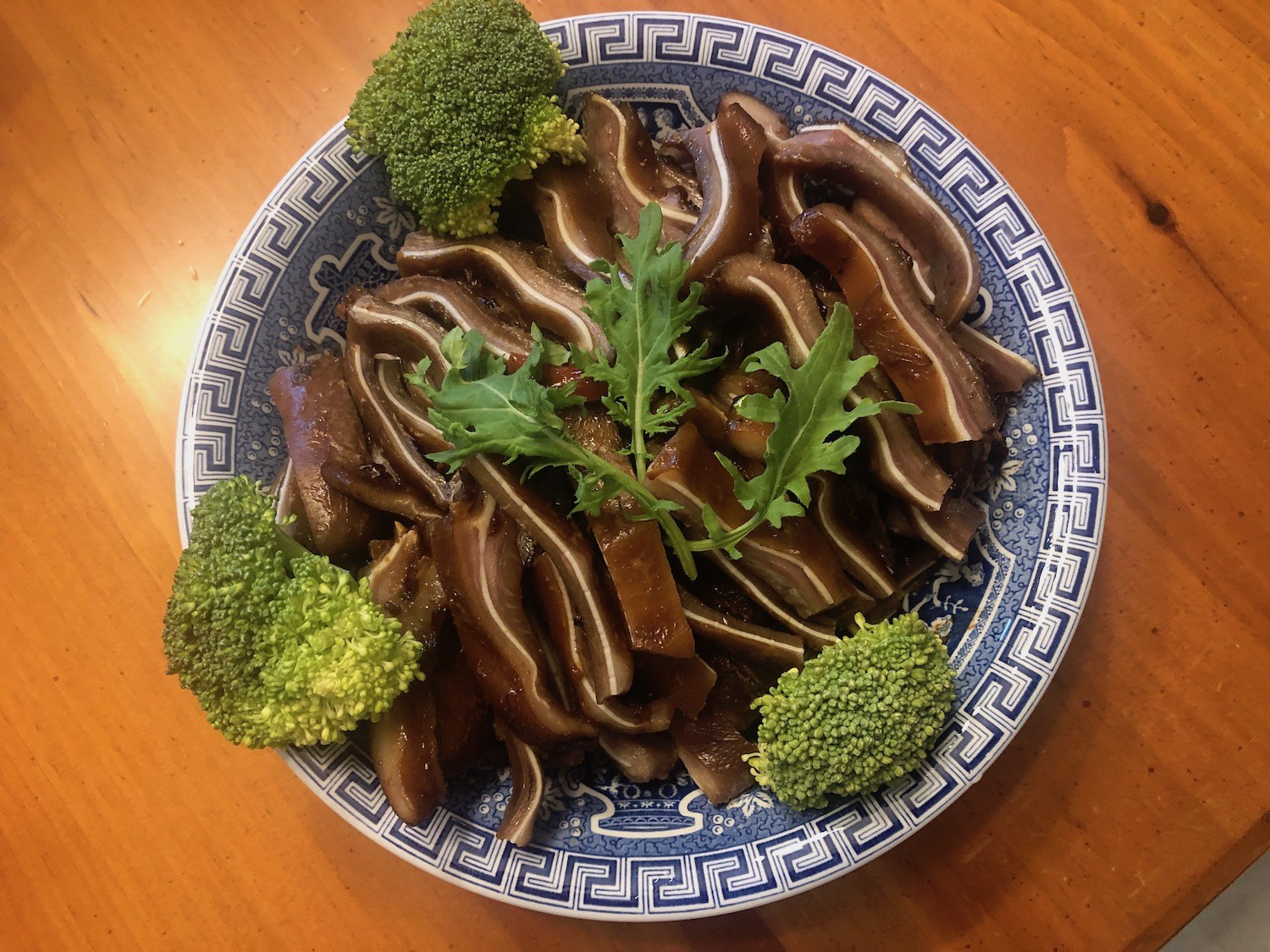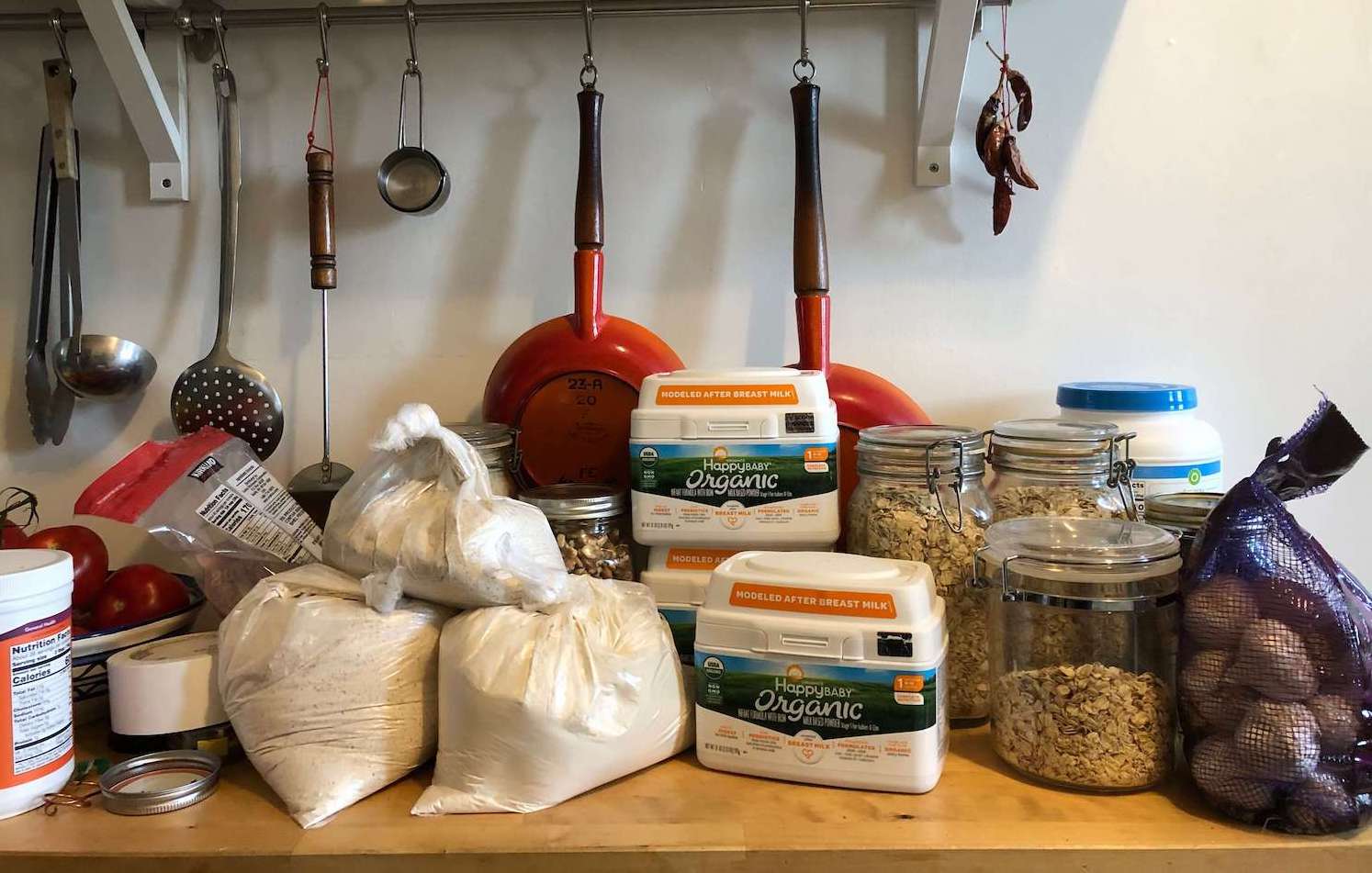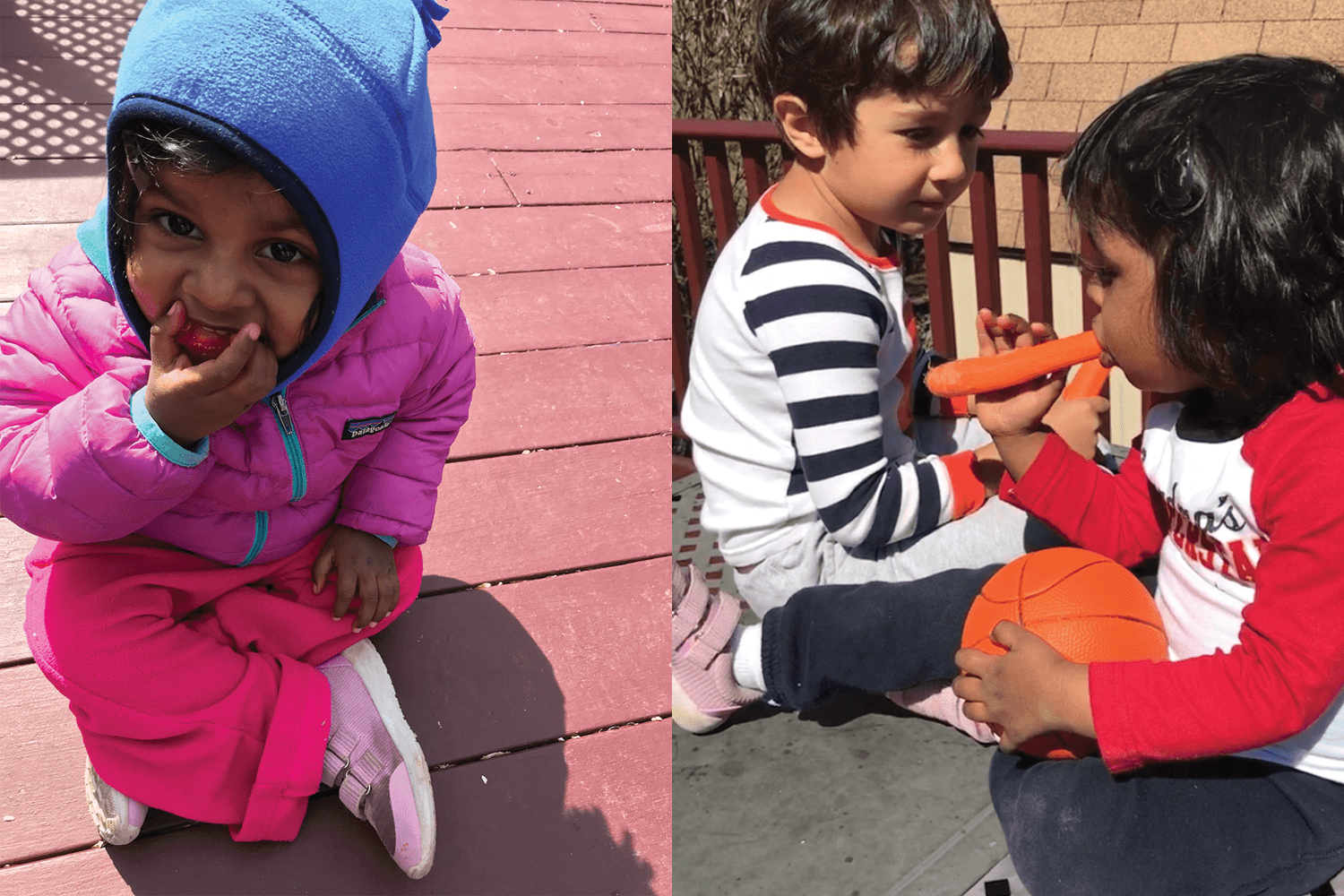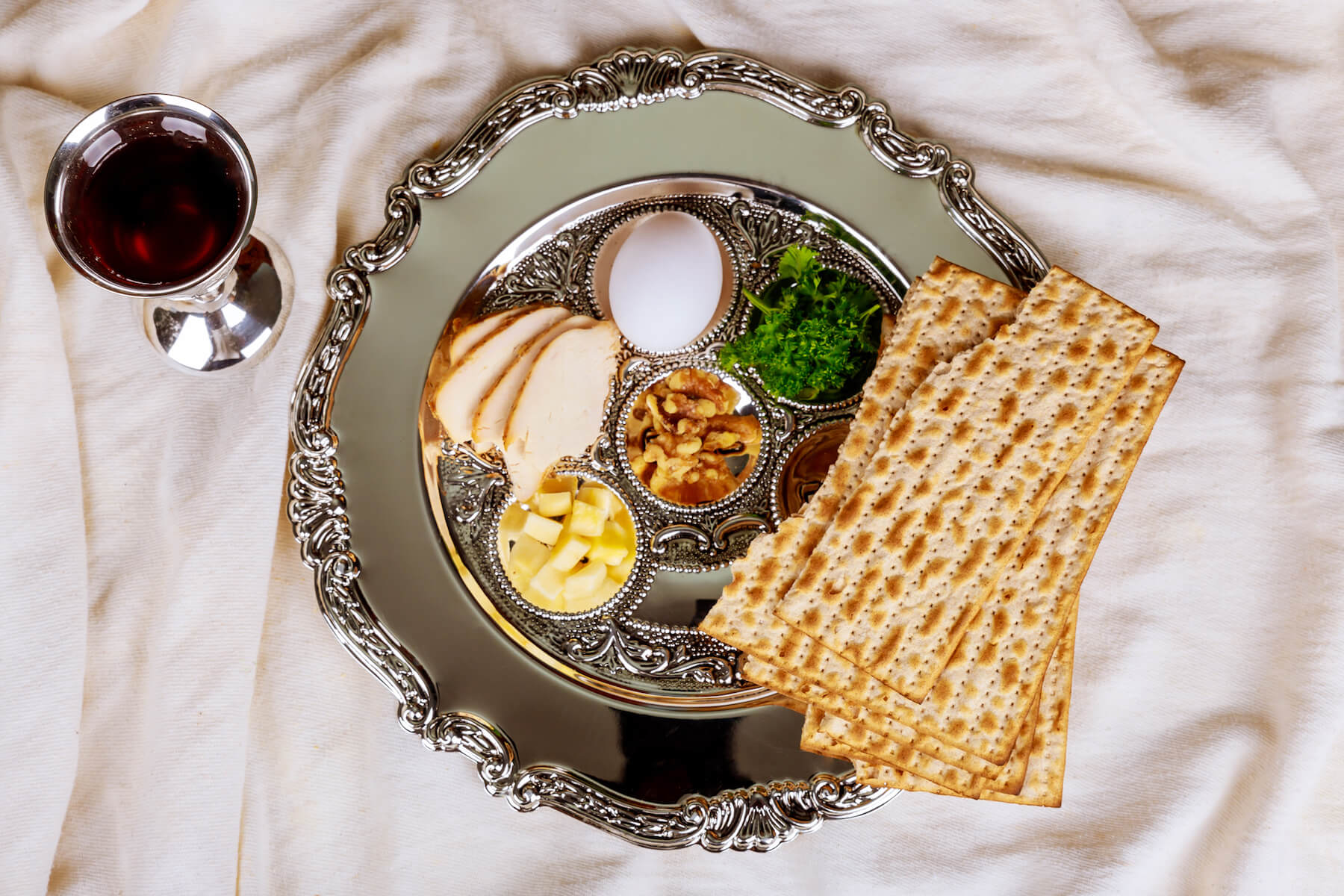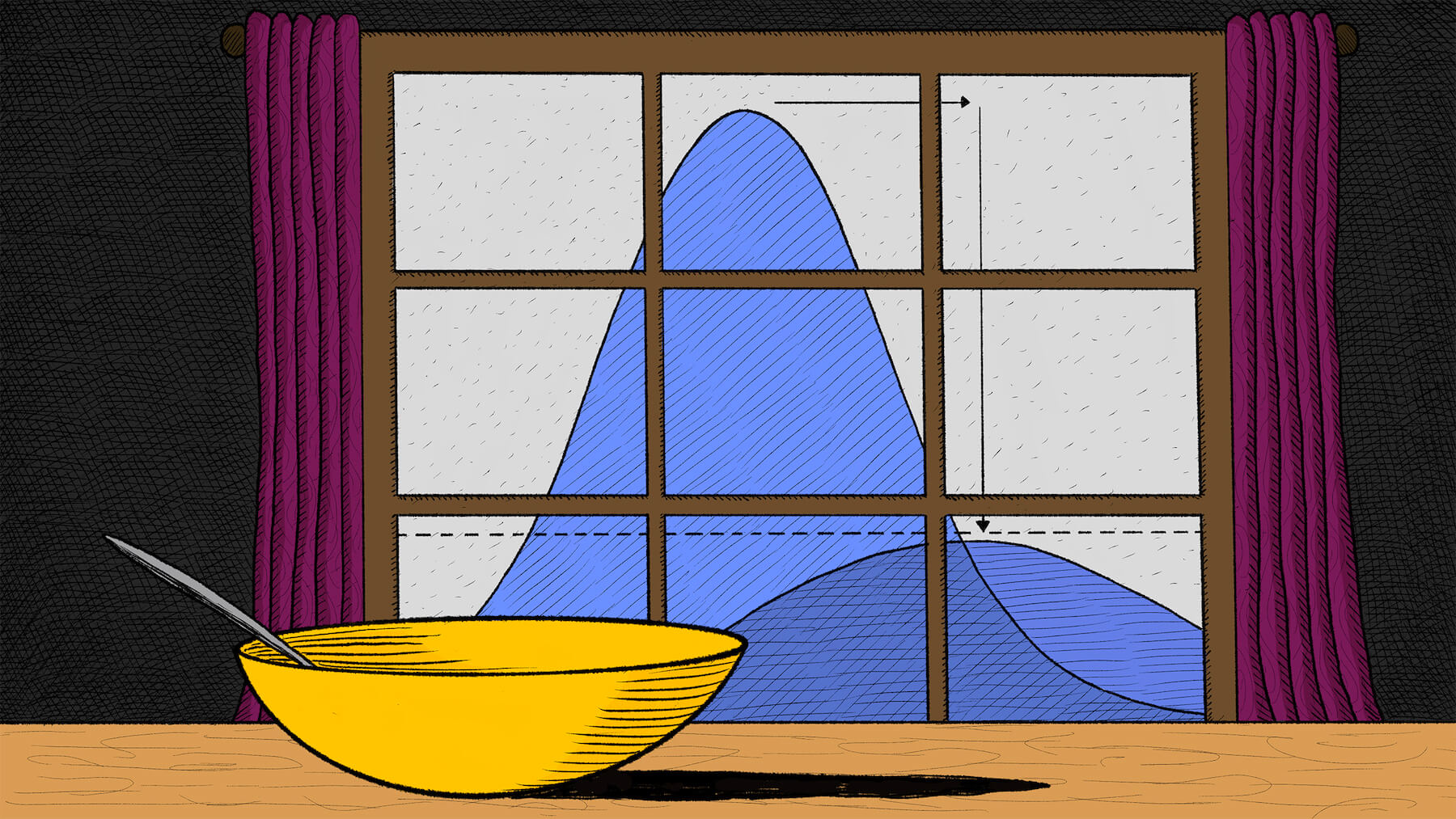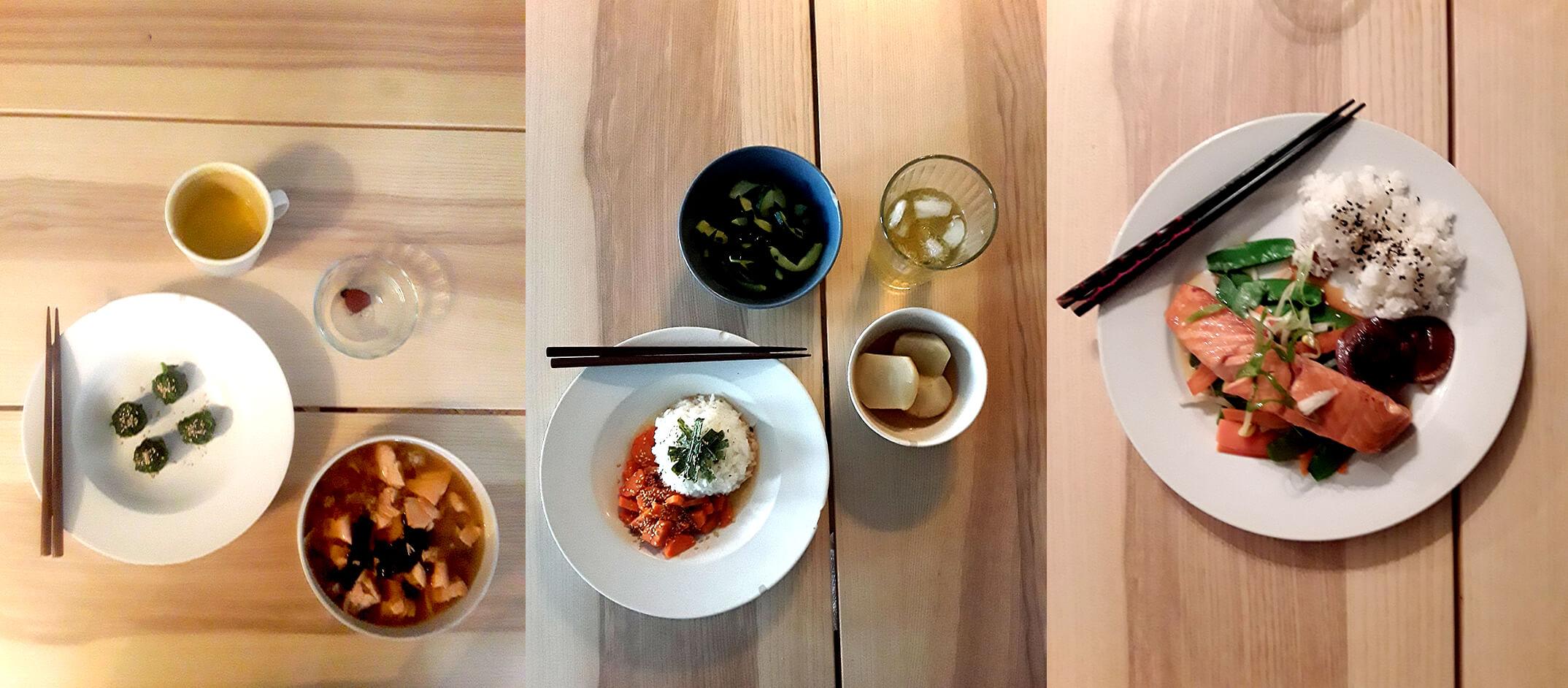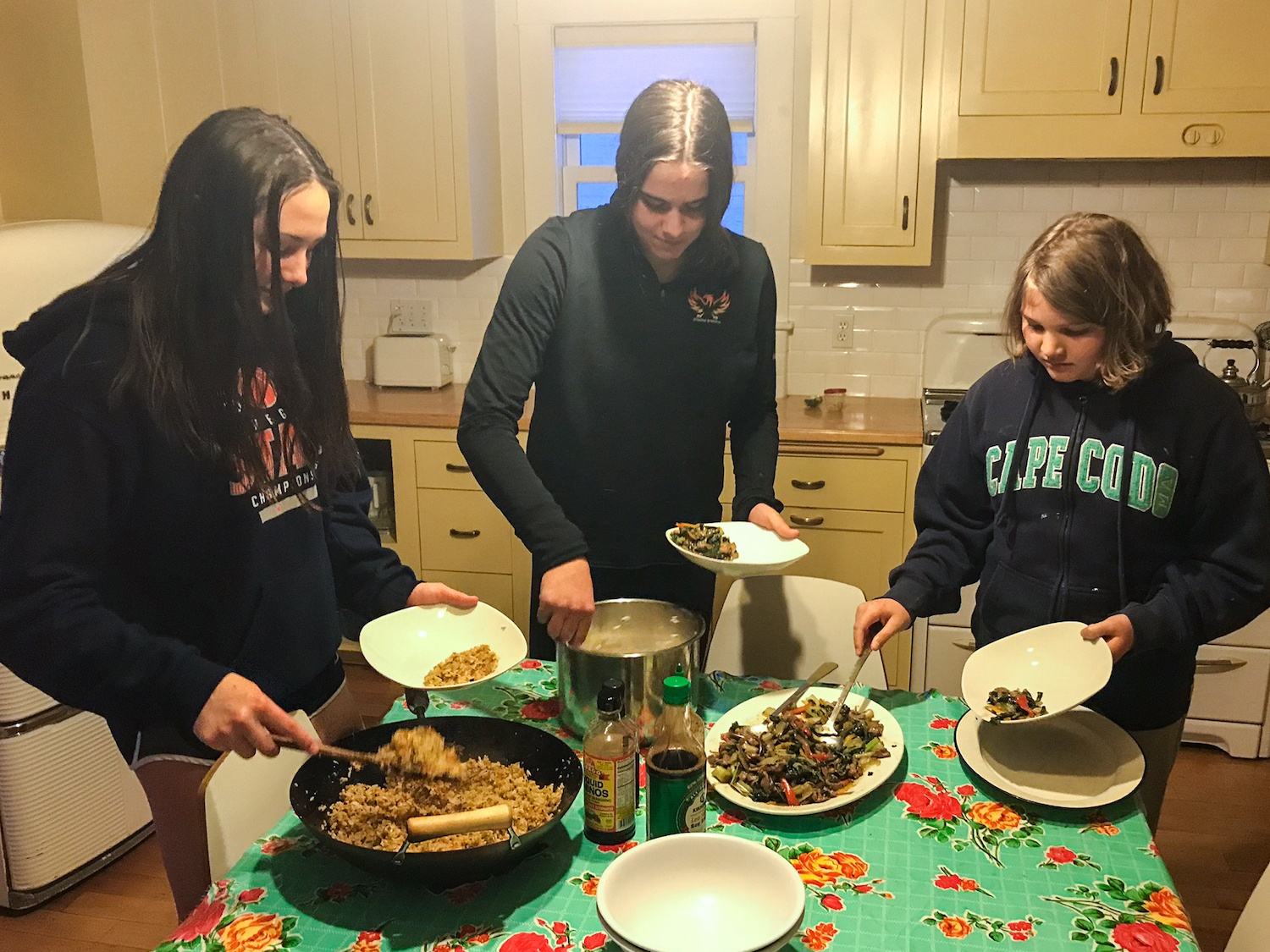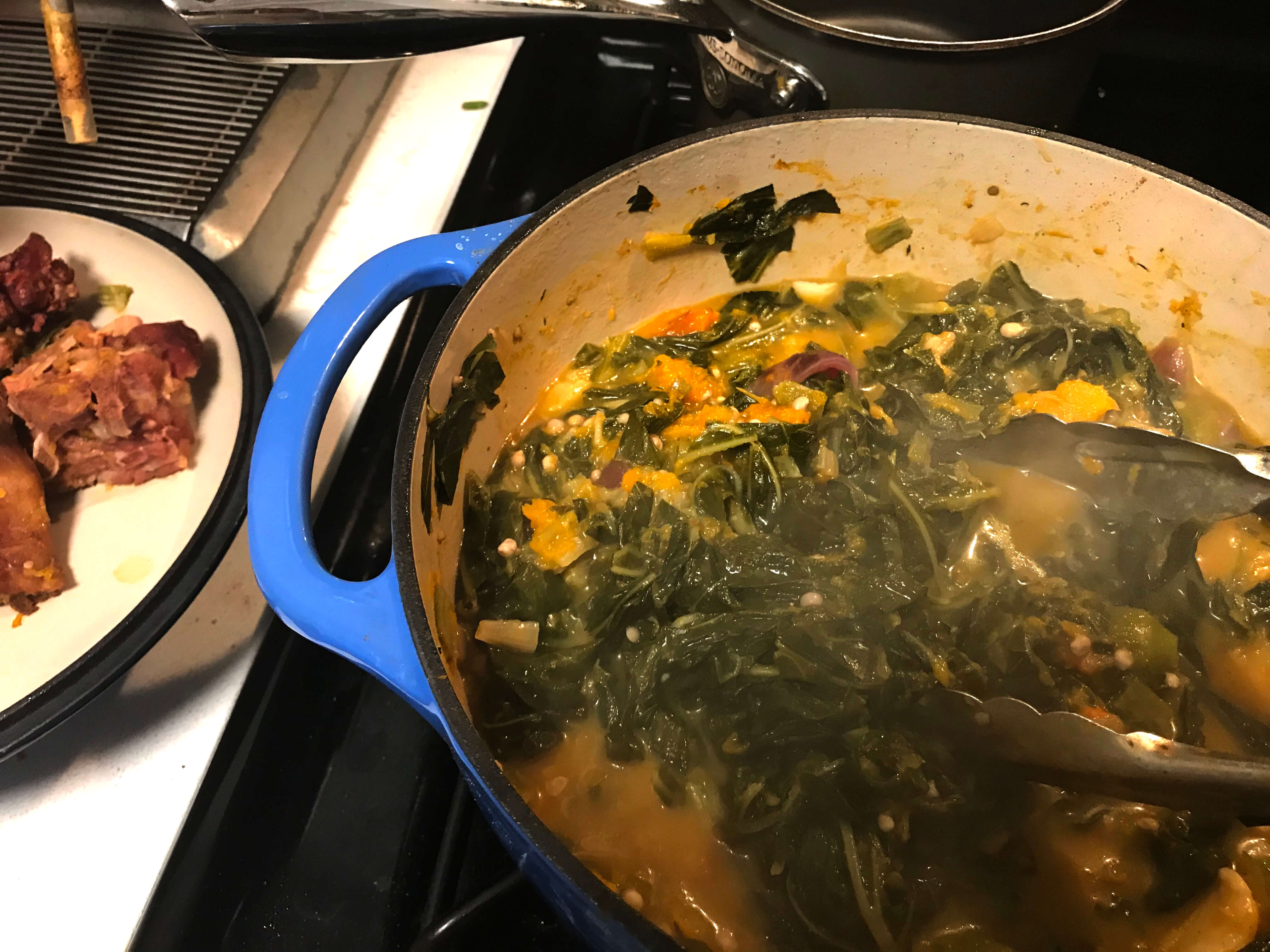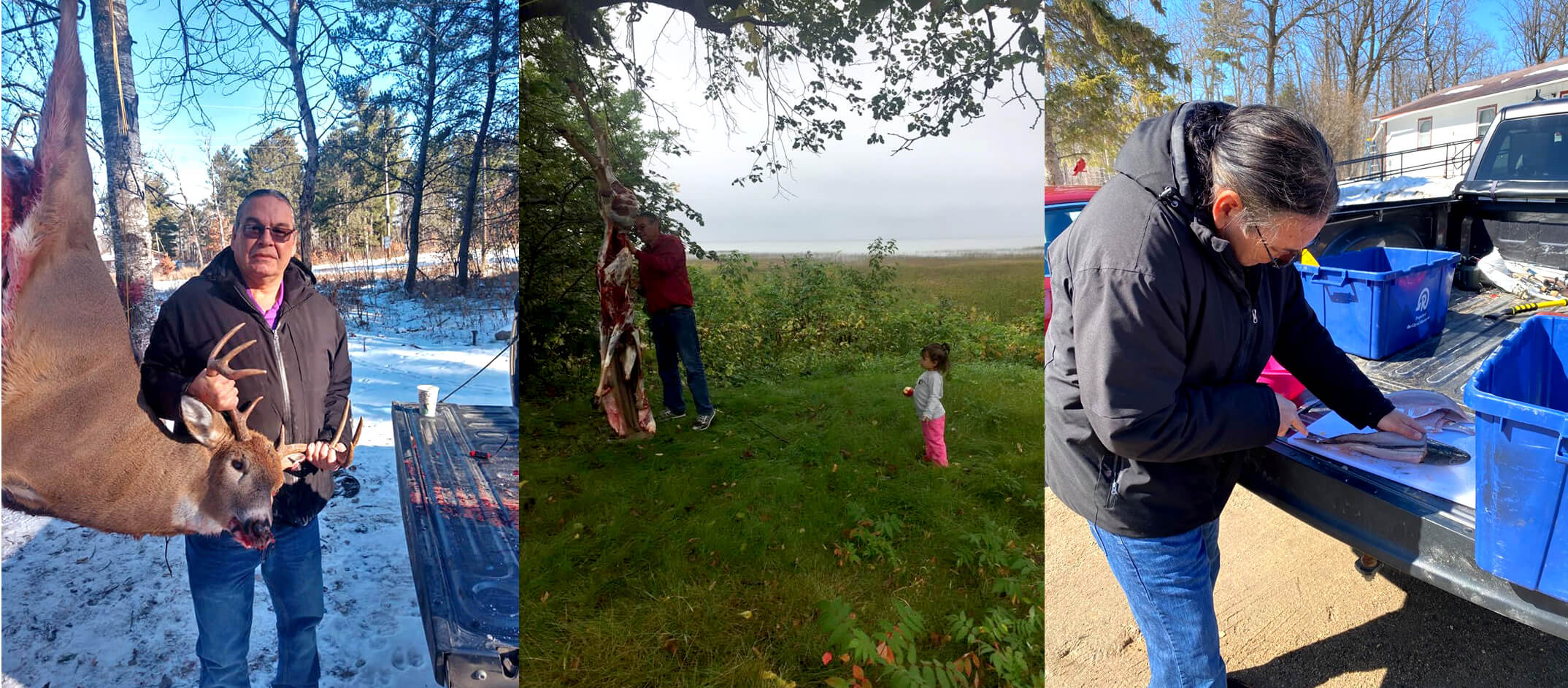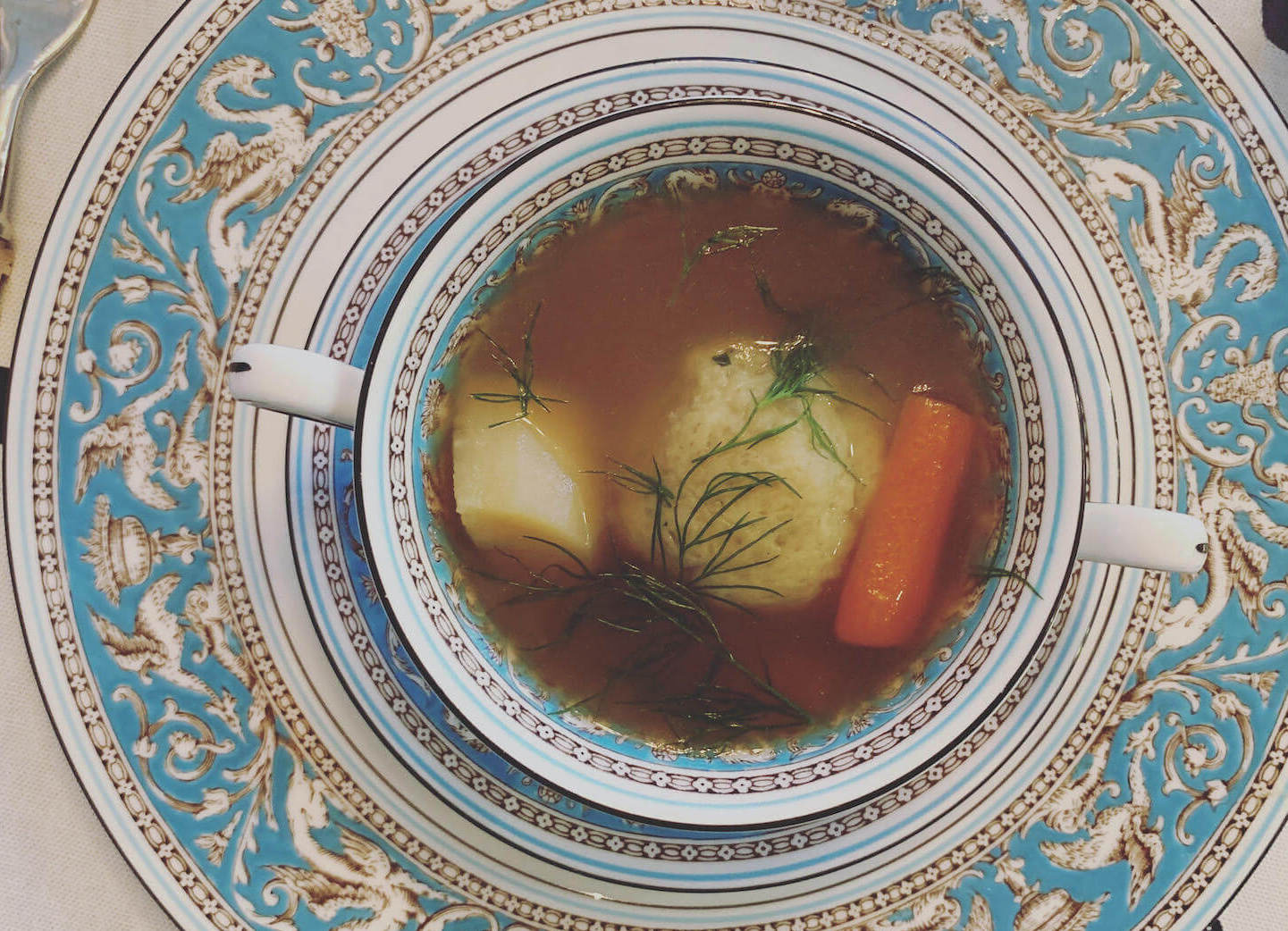
Hannah Selinger
How the Covid-19 pandemic taught me to ditch luxury foods and embrace the challenge of eating what’s on hand.
“He was a bold man that first ate an oyster,” Jonathan Swift once famously said, but I don’t think he was quite right about that. Bold? Or just hungry? To the uninitiated, an oyster is a slimy, slippery thing, but to many it’s a delicacy. Hundreds of years ago, to the first man or woman who stumbled upon one, it was just something to eat. It was something there when they were hungry.
Above: the author’s photo of matzoh ball soup
We are all hungry these days. We are in our homes, and we are hungry. Gone are the days of short grocery lists and knowing what the stores will hold for us. I send my husband out with diminished expectations. I send him out with lists that hold hopes and dreams. I would love the Medjool dates, you see, but he can’t even find a packet of yeast.
They did not start with flavor, these foods that we now perceive as delicious. These foods, these tiny—and then grand—luxuries, they started with frugality. They started with access.
I was duped—so many of us were—into believing that I could eat anything I wanted. That’s what a booming economy will do for you. That’s what the luxury of a full pantry and full stores and a full bank account will do to you. That’s what the luxury of a comfortable existence will do to you. It will make you forget that some of the best foods are born of struggle. That’s why people eat the whole animal. That’s why we stew meats along with their bones. That’s why, where I live, on eastern Long Island, people began making clam pies, hundreds of years ago, from clams they dug in both winter and summer. Clams were no luxury, but they were always, reliably, available.
They did not start with flavor, these foods that we now perceive as delicious. These foods, these tiny—and then grand—luxuries, they started with frugality. They started with access. When did we become a people with the ability to turn a nose up at liver, or pancreas, or stomach lining, to choose between bone and flesh? Choice is a barometer of the times, and it flourishes when times are good, and we became cavalier with the foods at our disposal.
If I learn nothing else in my own kitchen, I will learn how to return to the foods of access, how to preserve what I have, how to stretch my fridge and freezer, how to waste nothing, how to share, how to save, how to plan, how to persevere. The foods of poverty that I dismissed? The bones that I threw out? The cheap cuts of meat that were beneath me? These are mine now to reclaim.
